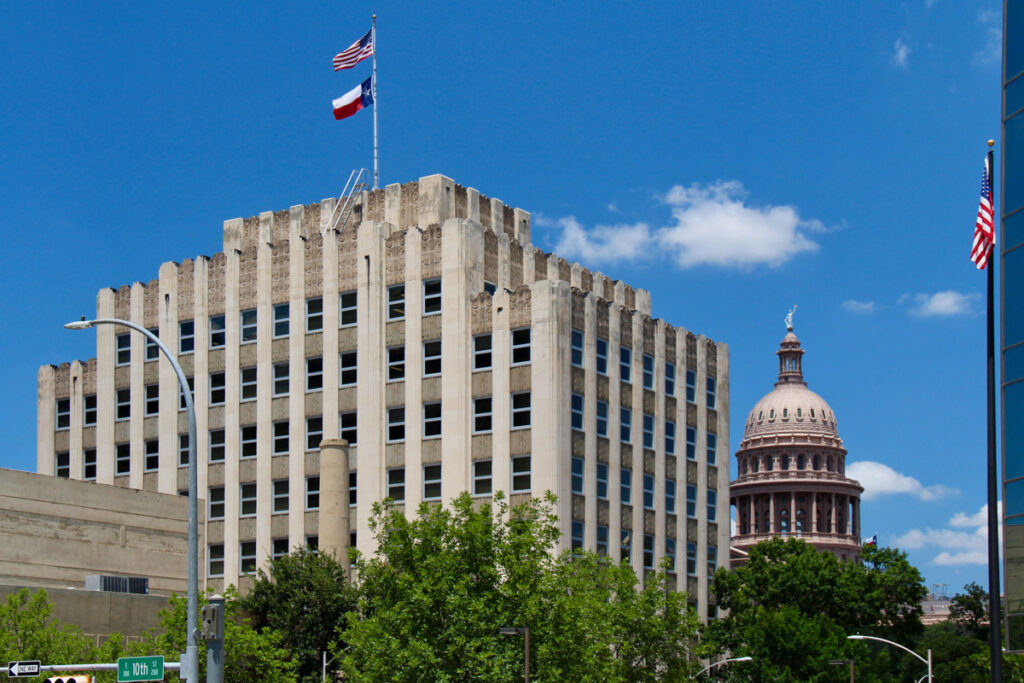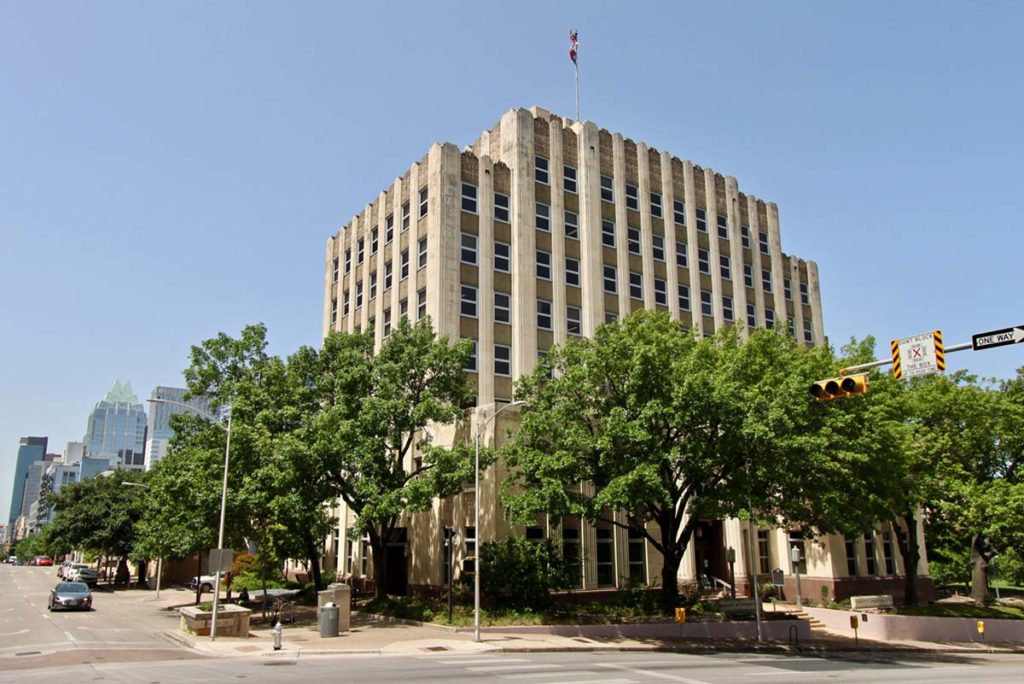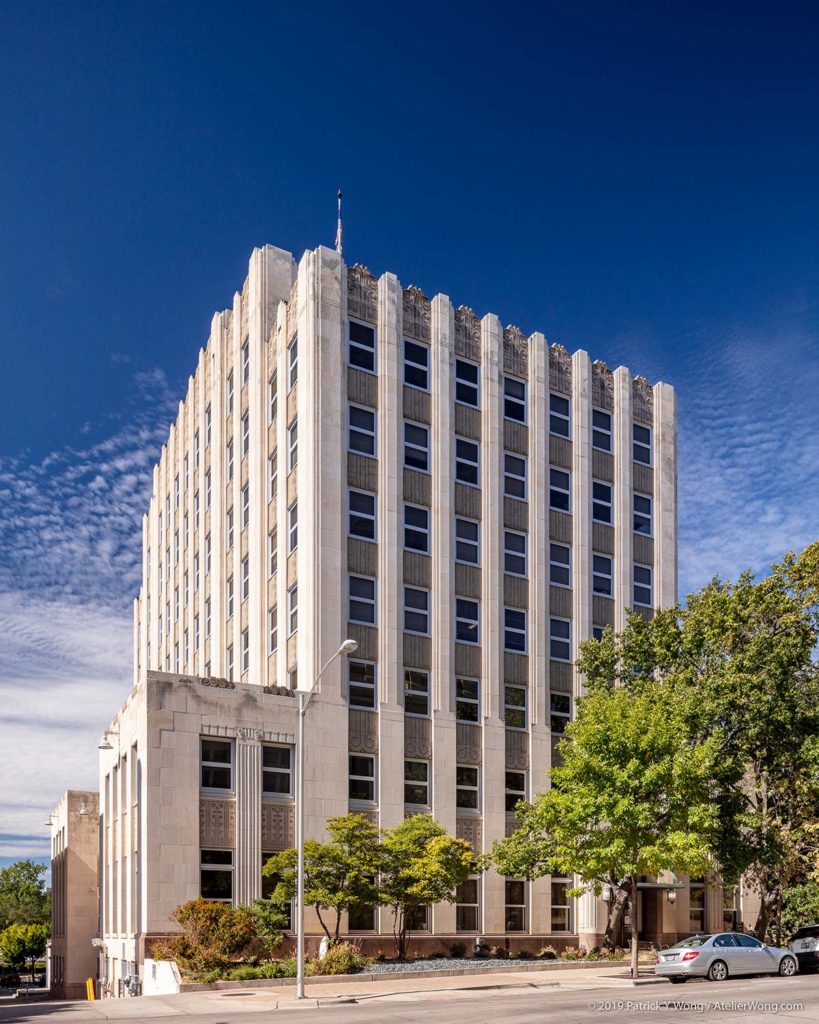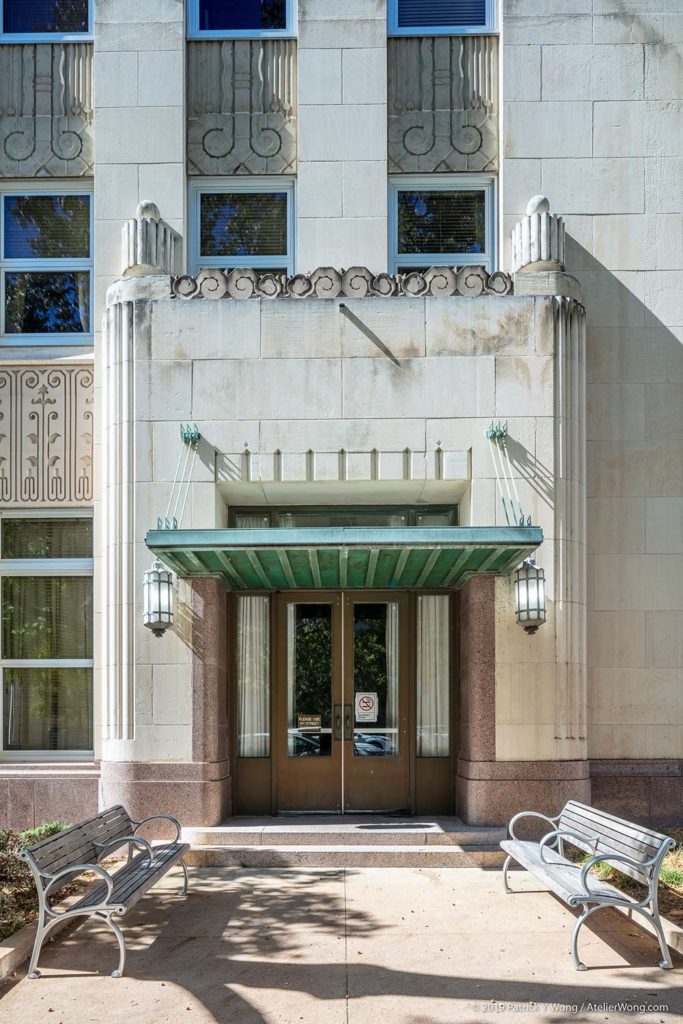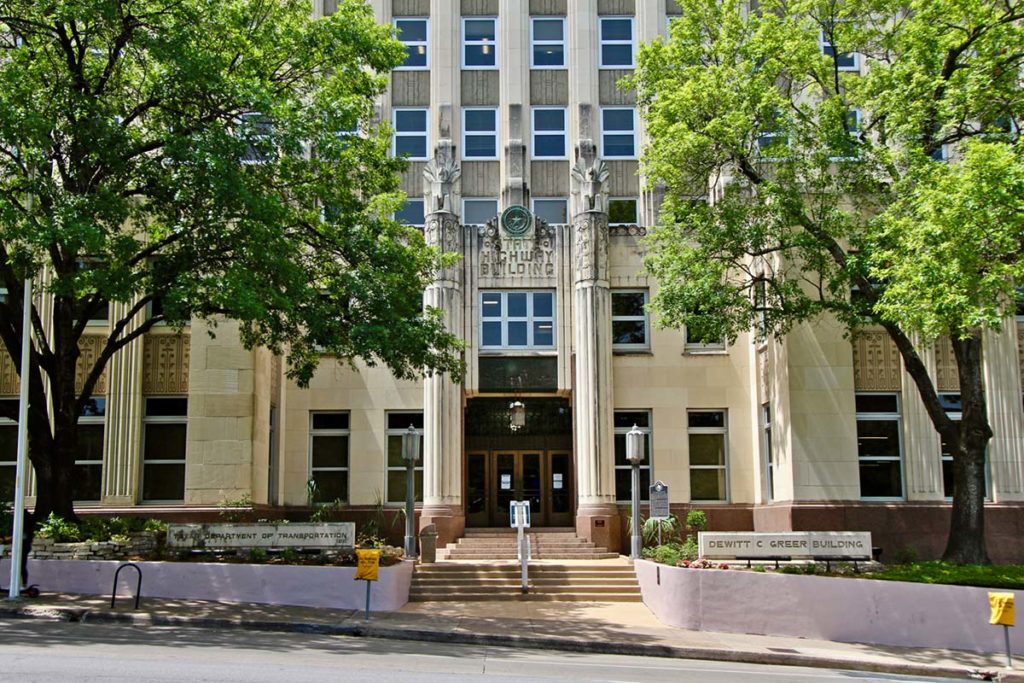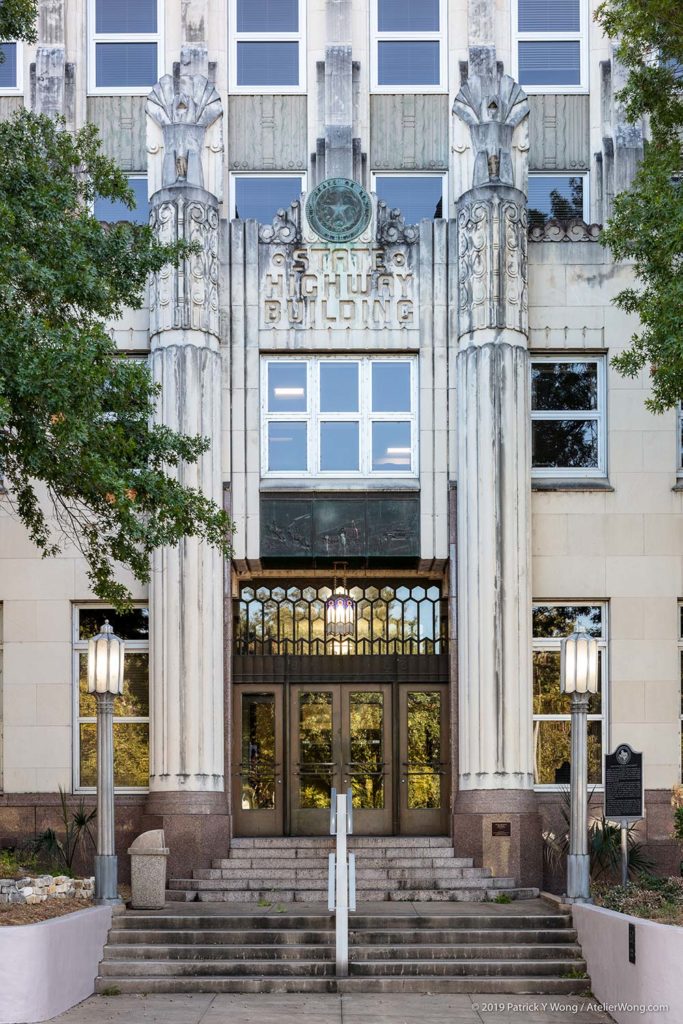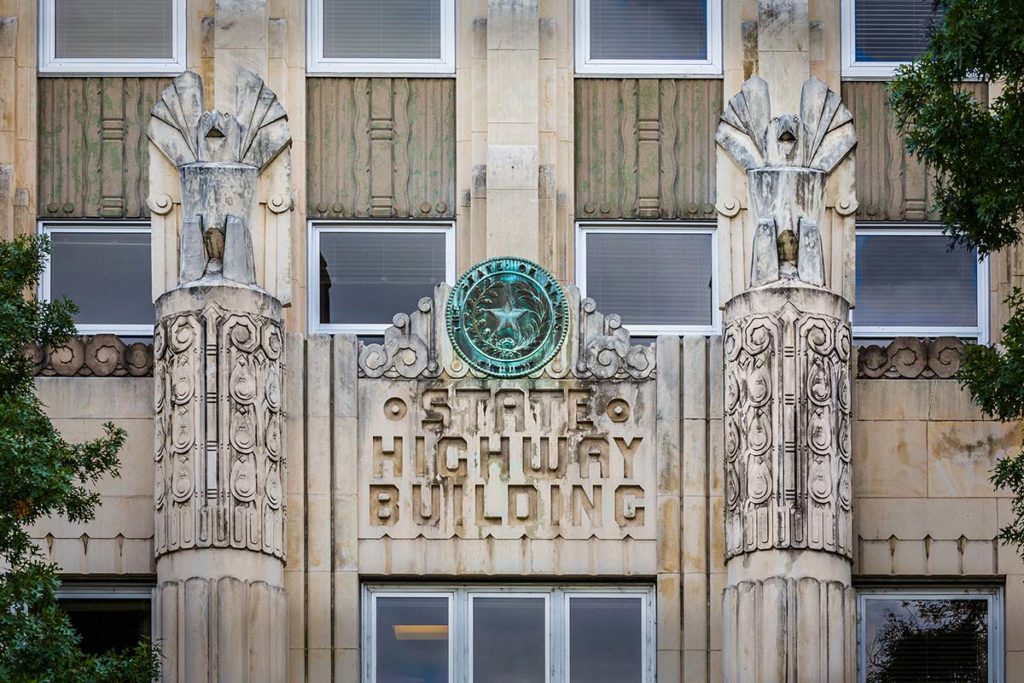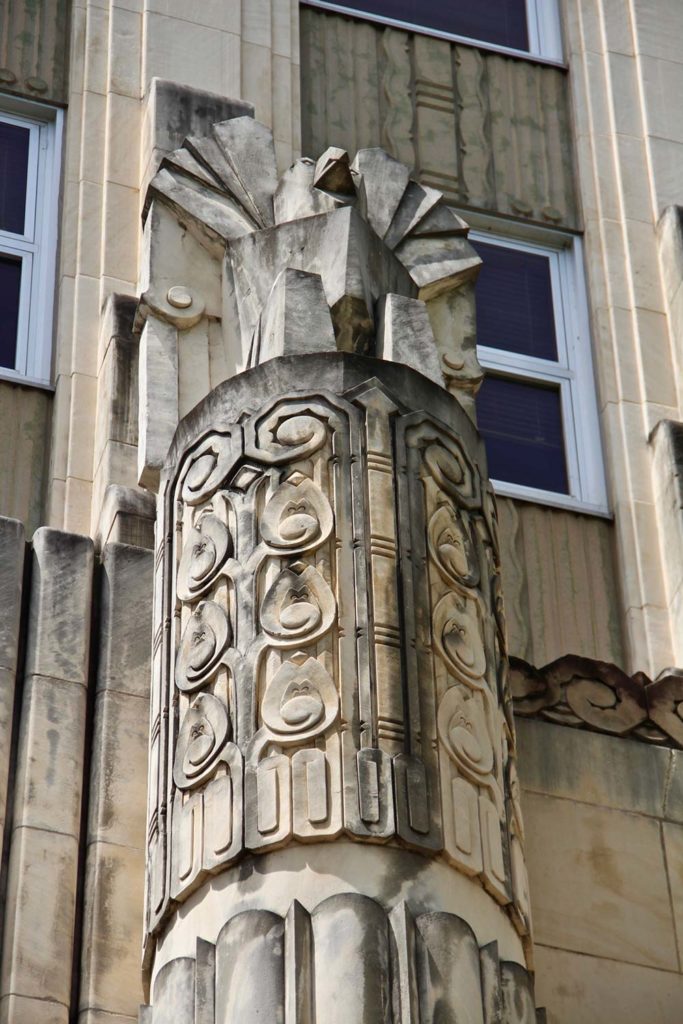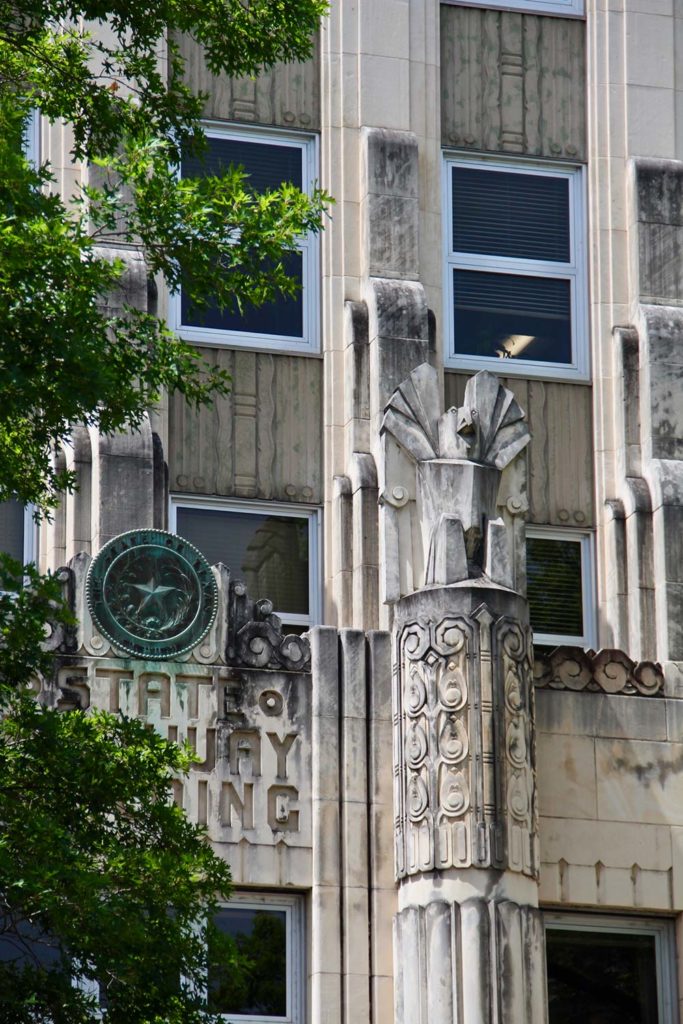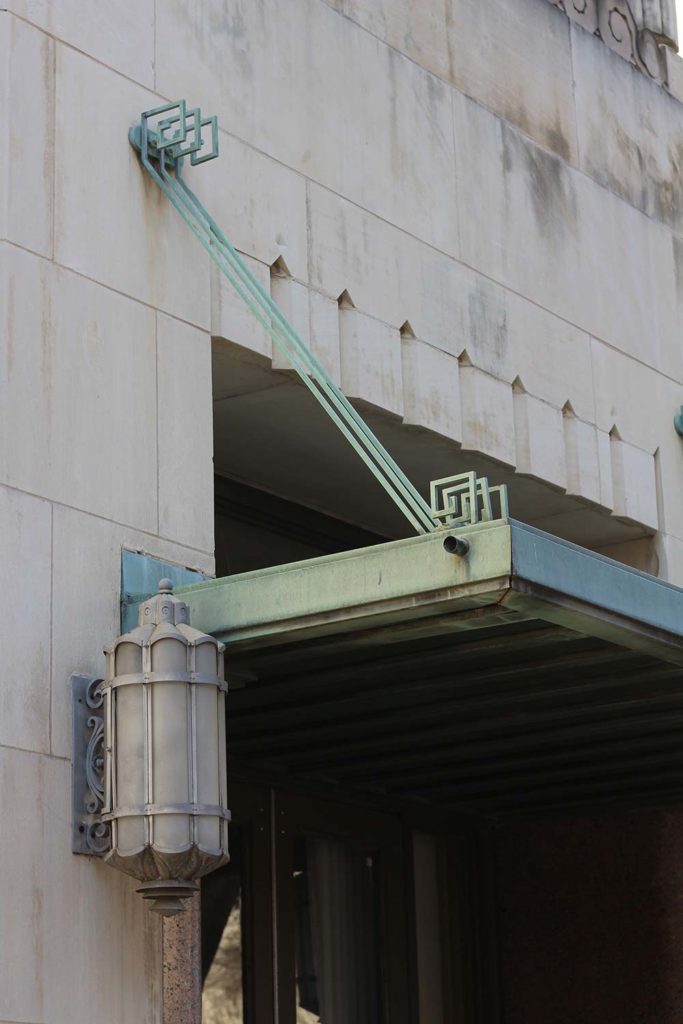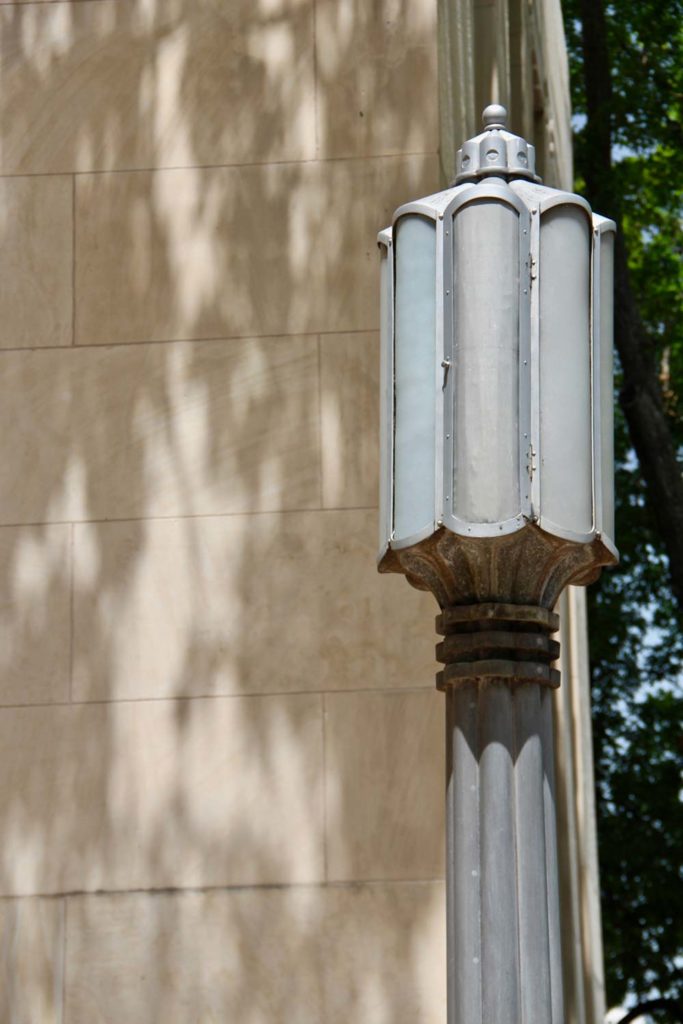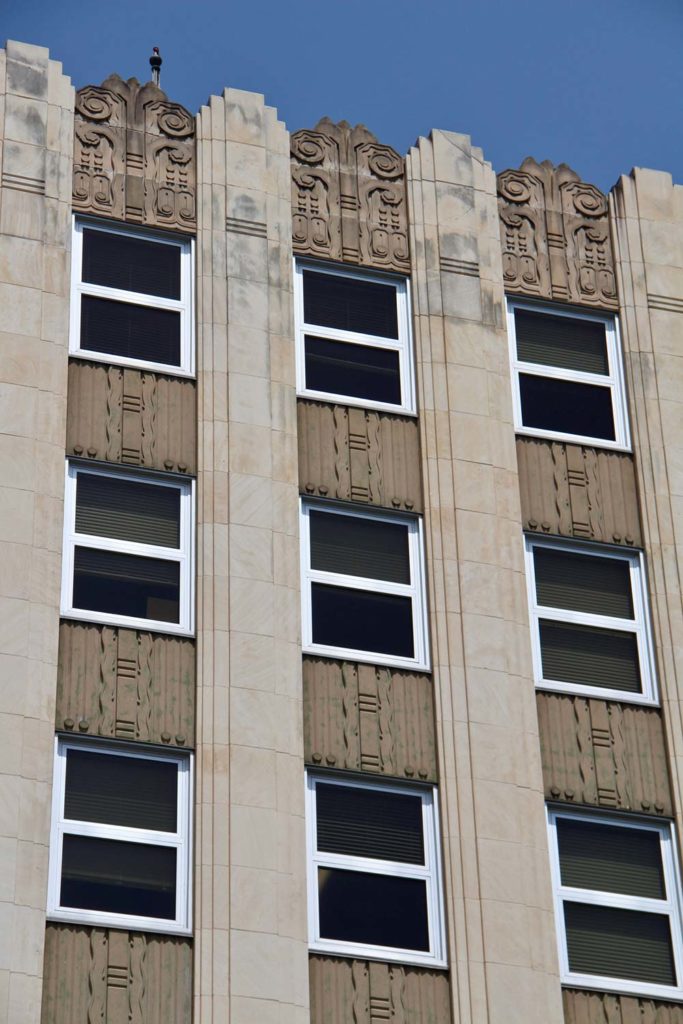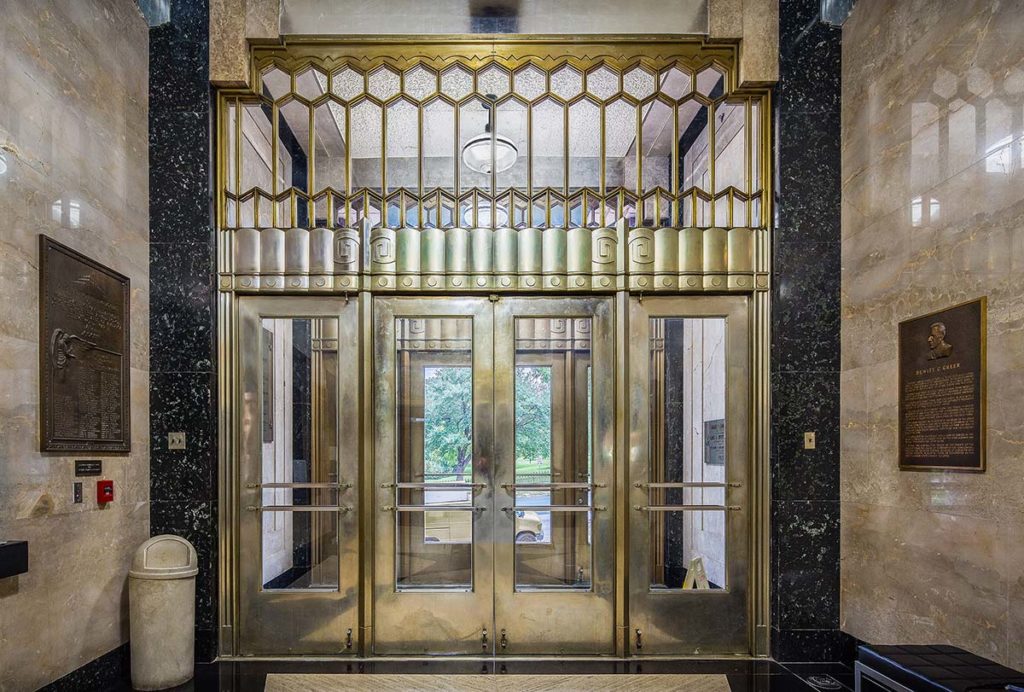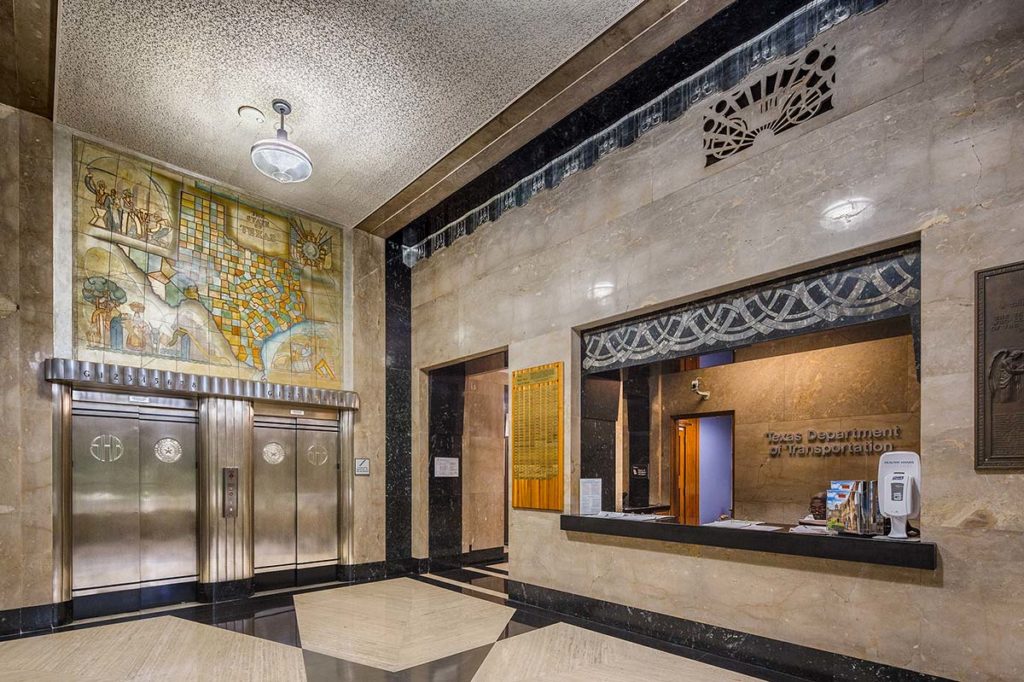Standing in front of this well-preserved Art Deco edifice, you could be forgiven for thinking that you had been teleported to Rockefeller Center in New York City. The stepped massing, geometric floral patterns, fluted stone spandrels, and continuous vertical piers that terminate in a serrated (zigzag) roofline are all hallmarks of that famous Manhattan landmark. But this take on the Art Deco style, which was all the rage in the 1930s, contains a few uniquely Texan twists.
The State Highway Building is one of several prominent structures built in the first half of the 20th century to meet the demand for the growing state government, which has long been one of the pillars of Austin’s development. The rapid growth of Texas in the late 19th century emphasized the need for better roads, while office space was at a premium as hundreds of state employees were being crammed into limited facilities. Today, the offices within manage 79,000 miles of state-owned roads.
Prior to designing the State Highway Building, architect Carleton Adams traveled to several cities including St. Louis, Chicago, New York, and Washington, D.C. to view and evaluate designs for public buildings. The influence of this tour is clear, especially in the fluted columns topped by stylized eagles that flank the entrance, which are nearly identical to the Fifth Avenue entrance to the Empire State Building (completed two years earlier). But the architect made sure to put his own stamp on the design: The polished pink granite base nods to the state capitol across the street, and the bas-relief above the entrance traces the history of Texan transportation from Native Americans on horseback to ox-drawn wagons to Model Ts. Above it all is a prominent lone star seal.
If the building is open, step inside to marvel at the ornate marble lobby—one of the finest in the city—that occupies the center of an axial plan organized around the central elevators. Clad in glimmering stainless steel stamped with “SHB” and the lone star seal, the elevator doors are crowned with a vibrant mural that features a map of the state’s counties surrounded by scenes of hard-working Texans. Note the perforated stone vents that depict road rollers, the decorative cornice finished with silver leaf, and the fine metalwork above the glass doors. If accessible, the hearing room contains a well-preserved ceiling and ornamentation. – Bud Franck
